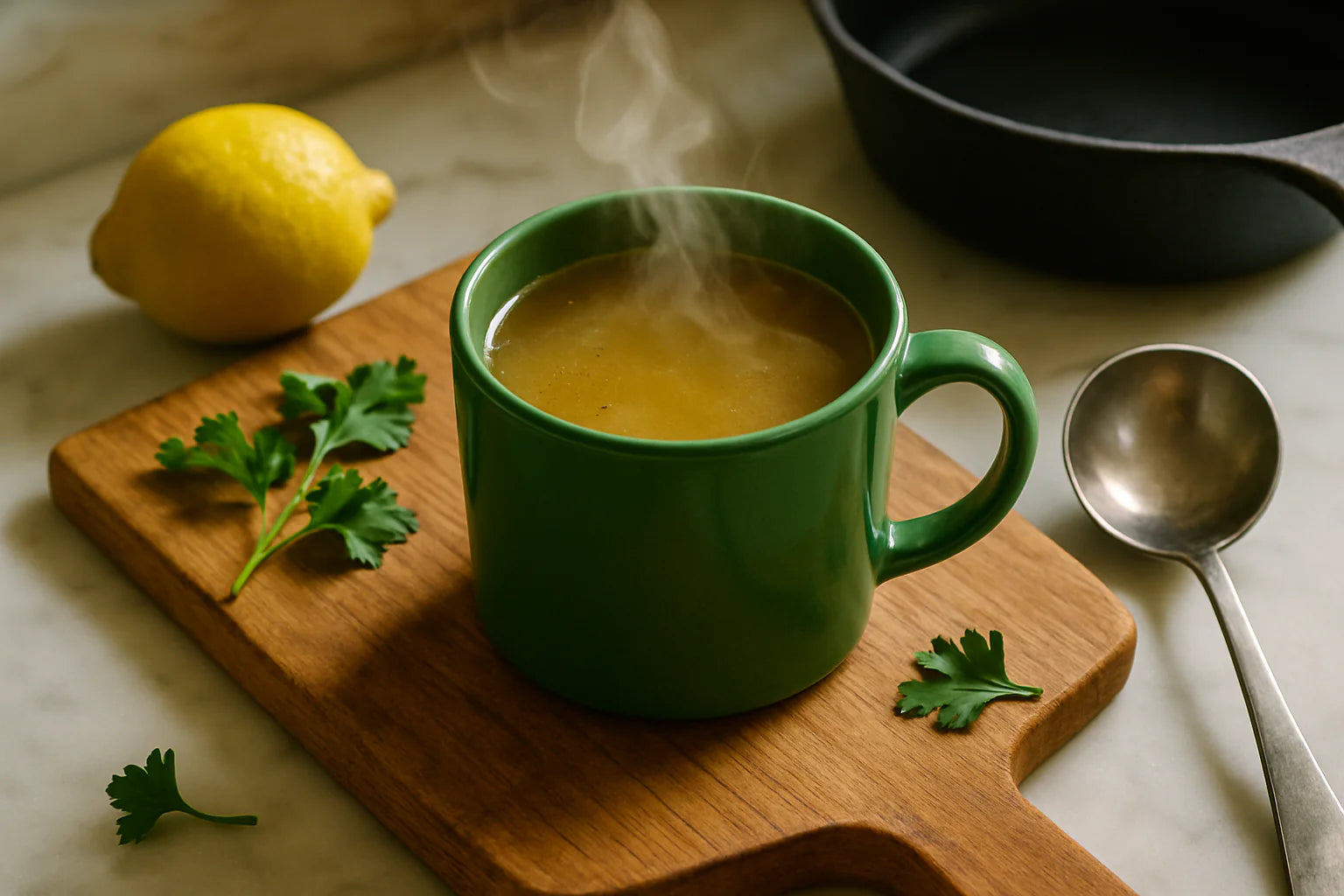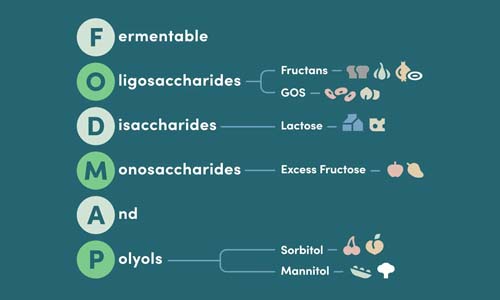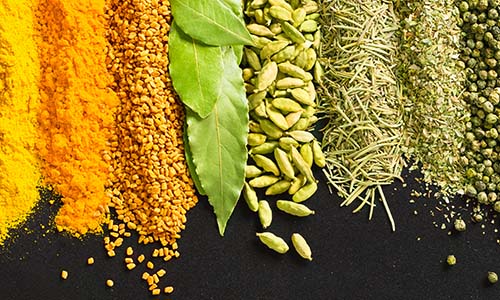Is Cabbage Low FODMAP? Your Complete Guide 2025

If you're managing IBS or digestive sensitivities, you've probably found yourself scrutinizing every vegetable that lands on your plate. Cabbage is one of those versatile, nutrient-packed vegetables that often raises questions for people following a low FODMAP diet. The good news? You don't have to give up this cruciferous powerhouse entirely.
Key Takeaways
- Cabbage is low FODMAP when consumed in specific serving sizes.
- Green, red, and savoy cabbage are low FODMAP at 75g, approximately ¾ cup raw.
- Napa cabbage is low FODMAP at servings up to 1 cup.
- Larger portions of cabbage may cause digestive symptoms in sensitive individuals.
- You can still enjoy cabbage on a low FODMAP diet without giving it up entirely.
Table of Contents
- What Are FODMAPs?
- The Low FODMAP Diet
- Cabbage: Nutrition Powerhouse with FODMAP Considerations
- Types of Cabbage and Their Low FODMAP Serving Sizes
- Why Does Cabbage Cause Gas Even in Low FODMAP Portions?
- How to Enjoy Cabbage on a Low FODMAP Diet
- Tips for Long-Term Success with Cabbage on Low FODMAP
- Making Cabbage Work for Your Low FODMAP Journey
With two-thirds of Americans experiencing digestive issues and nearly 1 billion people worldwide living with IBS, understanding which foods support comfortable digestion has never been more important. Cabbage can absolutely be part of your gut-friendly cooking repertoire—you just need to know the right portions and preparation methods. For a broader look at FODMAP-friendly eating, check out our FODMAP blog for more tips and resources.
Let's dive into everything you need to know about enjoying cabbage while keeping your digestive system happy.
What Are FODMAPs?
FODMAPs are fermentable short-chain carbohydrates that can trigger digestive symptoms like bloating, gas, and abdominal discomfort in sensitive individuals.
The acronym breaks down into five categories of carbohydrates that your small intestine struggles to absorb:
- Fermentable
- These carbs are broken down by bacteria in your gut
- Oligosaccharides
- Including fructans (found in wheat, onions) and galactans (found in legumes)
- Disaccharides
- Primarily lactose from dairy products
- Monosaccharides
- Excess fructose found in certain fruits and sweeteners
- Polyols
- Sugar alcohols like sorbitol and mannitol found in some fruits and artificial sweeteners
When these poorly absorbed carbohydrates reach your large intestine, they draw in water and get fermented by gut bacteria, leading to the gas, bloating, and digestive discomfort that many people with IBS experience. For a detailed overview of the science behind FODMAPs, visit this resource from the Canadian Digestive Health Foundation.
The Low FODMAP Diet

Developed by researchers at Monash University in Australia, the low FODMAP diet offers a drug-free approach to managing IBS symptoms. It's not a cure, but rather a systematic way to identify your personal trigger foods while maintaining nutritional variety. For more on the reintroduction process, see Monash University's reintroduction update.
The low FODMAP diet works best under professional guidance from a trained dietitian who can help you navigate the three phases safely and effectively.
The Three-Phase Process
- Elimination Phase (6-8 weeks): Strictly avoid high FODMAP foods to allow your digestive system to settle
- Reintroduction Phase: Gradually test each FODMAP group under professional supervision to identify your specific triggers
- Personalization Phase: Create your individualized long-term eating plan based on your tolerance levels
This systematic approach helps you maintain the widest possible variety of foods while keeping symptoms at bay—and that's where understanding vegetables like cabbage becomes crucial.
Cabbage: Nutrition Powerhouse with FODMAP Considerations
Before we dive into the FODMAP specifics, let's appreciate what makes cabbage such a valuable addition to your plate. This cruciferous vegetable delivers impressive nutritional bang for your buck.
Cabbage Nutrition Highlights:
- Rich in vitamin C (supports immune function)
- High in vitamin K (essential for bone health)
- Good source of folate and vitamin B6
- Contains potassium and magnesium
- Provides fiber for digestive health
- Extremely low in calories
Here's where it gets interesting for those following a low FODMAP approach: cabbage can absolutely be part of your gut-friendly cooking, but portion size is key. The reason comes down to its polyol content—specifically sorbitol, a sugar alcohol that can trigger symptoms when consumed in larger amounts.
You might be wondering: "So is cabbage actually low FODMAP or not?" The answer is yes, but with important caveats about serving sizes and cabbage varieties.
Types of Cabbage and Their Low FODMAP Serving Sizes

Not all cabbages are created equal when it comes to FODMAP content. Each variety has been tested by researchers at Monash University, and the results show some interesting differences in how much you can enjoy without triggering symptoms. For more creative ways to use cabbage, visit our Low FODMAP Recipes blog for inspiration.
Quick Answer: Most cabbage varieties are low FODMAP at 75g (about ¾ cup raw), but serving sizes vary by type. Napa cabbage offers the most generous portions, while fermented varieties require more caution.
Green/White/Common Cabbage - The Kitchen Staple
Low FODMAP serving: 75g (about ¾ cup raw or ½ cup cooked)
This is your standard grocery store cabbage—the one you'll find in most coleslaw recipes and stir-fries. The 75g limit exists because common cabbage contains sorbitol, a polyol that can accumulate and trigger symptoms in larger portions. Think of this as roughly the amount you'd use in a single serving of coleslaw or as a side dish.
- Most widely available variety
- Mild, slightly sweet flavor
- Perfect for sautéing, roasting, or raw preparations
- Holds up well to longer cooking methods
Red/Purple Cabbage - The Colorful Choice
Low FODMAP serving: 75g (about ¾ cup raw)
Red cabbage follows the same FODMAP guidelines as its green counterpart, making it an excellent way to add vibrant color to your low FODMAP meals. The anthocyanins that give it that beautiful purple-red hue also provide additional antioxidant benefits.
Red cabbage tends to be slightly more robust in flavor than green cabbage, making it particularly delicious when quick-pickled or used raw in slaws.
Napa/Chinese Cabbage (Wombok) - The Generous Option
Low FODMAP serving: 75g (about 1 cup raw)
Here's where things get interesting. While testing has shown that napa cabbage remains low FODMAP even at much larger servings (up to 1500g in some studies), experts still recommend sticking to the standard 75g portion for consistency and safety.
- Milder, more delicate flavor than common cabbage
- Tender leaves perfect for wraps
- Quick-cooking variety ideal for stir-fries
- Higher water content makes it less dense
Why the conservative recommendation? Even though napa cabbage tests well at larger portions, individual tolerance varies, and it's better to start conservatively during the elimination phase of your low FODMAP journey.
Savoy Cabbage - The Textured Variety
Low FODMAP serving: ½ cup raw
Savoy cabbage has those beautiful crinkled leaves and a slightly more complex flavor profile. It requires a more conservative portion size compared to other fresh cabbage varieties, but its tender texture and sweet taste make it worth including in your rotation.
Fermented Cabbage - Special Considerations
Fermentation changes the game entirely. The process alters the carbohydrate structure of cabbage, sometimes increasing certain FODMAPs like mannitol.
| Fermented Cabbage Type | Low FODMAP Serving | Notes |
|---|---|---|
| Fermented Red Cabbage | ½ cup | More generous serving allowed |
| White Sauerkraut | 1 tablespoon | Higher mannitol content limits portion |
| Kimchi (homemade) | 1-2 tablespoons | Depends on ingredients used |
When it comes to fermented cabbage, always check the ingredient list. Many commercial varieties contain high FODMAP additions like garlic, onion, or high FODMAP seasonings that can push a small serving into trigger territory.
Why Does Cabbage Cause Gas Even in Low FODMAP Portions?
You might be wondering: "If I'm eating the right amount of cabbage for low FODMAP, why do I still feel gassy sometimes?" This is one of the most common questions we hear from Gourmend customers, and the answer lies in understanding that FODMAPs aren't the only compounds that can affect digestion.
Cabbage contains sulfur compounds and raffinose—a complex sugar that's different from FODMAPs but can still cause gas production during digestion. This means even low FODMAP portions might cause some people to feel gassy.
The Non-FODMAP Culprits
- Sulfur Compounds
- These give cruciferous vegetables their characteristic smell when cooking and can contribute to gas production regardless of FODMAP content
- Raffinose
- A complex carbohydrate that our digestive enzymes can't break down efficiently, leading to bacterial fermentation in the large intestine
- High Fiber Content
- While beneficial for gut health, the sudden increase in fiber can cause temporary digestive adjustment symptoms
This is why some people following a low FODMAP diet still experience symptoms with certain vegetables—it's not always about the FODMAPs themselves, but about other naturally occurring compounds that can affect sensitive digestive systems.
Tips for Better Cabbage Tolerance
- Start small: Begin with smaller portions than the recommended maximum and gradually increase
- Cook it well: Longer cooking can break down some of the harder-to-digest compounds
- Pair thoughtfully: Combine with easily digestible ingredients rather than other gas-producing foods
- Track your response: Keep a food diary to identify your personal tolerance patterns
- Consider timing: Some people tolerate cabbage better at certain times of day
How to Enjoy Cabbage on a Low FODMAP Diet

The beauty of cabbage lies in its versatility—you can transform this humble vegetable into countless delicious dishes while staying within your low FODMAP limits. We've found that the key is focusing on preparation methods that maximize flavor while respecting portion sizes.
The best approach to enjoying cabbage on a low FODMAP diet is to treat it as a supporting player rather than the main event, using your 75g portion strategically across different cooking methods and flavor combinations.
Sautéed Cabbage with Garlic Chives
Transform your cabbage portion into a restaurant-quality side dish by sautéing it with garlic chives and a splash of our Gourmend Vegetable Broth. The garlic chives provide that savory depth you're craving without the FODMAP load of garlic bulbs.
- Quick 5-minute cooking time preserves nutrients
- Garlic chives add aromatic complexity
- Perfect alongside grilled proteins
- Works with any cabbage variety
Fresh Cabbage Coleslaw - The Classic Reinvented
A well-made coleslaw showcases cabbage's natural crunch and sweetness. Using your 75g portion of mixed green and red cabbage, you can create a colorful side that's both satisfying and gentle on digestion. For a delicious protein pairing, try our Low FODMAP Miso Salmon recipe.
Pro tip: Mix your cabbage with grated carrots, a small amount of scallion greens, and a simple olive oil and lemon dressing for a fresh, low FODMAP coleslaw that serves 2-3 people.
Stir-Fried Napa Cabbage with Ginger
Napa cabbage's tender leaves make it perfect for quick stir-fries. Its mild flavor pairs beautifully with fresh ginger, creating a dish that's both comforting and digestively soothing.
Cooking consideration: Napa cabbage cooks down significantly, so your 75g raw portion will reduce to about ⅓ cup cooked—perfect for mixing with other low FODMAP vegetables.
Grilled Cabbage Wedges - Smoky and Satisfying
Grilling cabbage wedges brings out incredible caramelized flavors while maintaining the vegetable's natural structure. The high heat creates crispy edges and tender centers that make your portion feel substantial and satisfying.
- Caramelization adds natural sweetness
- Smoky flavor from the grill
- Impressive presentation for entertaining
- Pairs well with herb-infused olive oil
Cabbage Leaf Wraps - Creative and Filling
Large cabbage leaves make excellent wraps for low FODMAP fillings. While you'll need to count the cabbage toward your daily portion, the leaves provide structure and crunch that make meals feel more complete.
Blanch cabbage leaves briefly in boiling water to make them more pliable for wrapping. This technique works especially well with savoy cabbage's naturally tender leaves.
Fermented Cabbage as Flavor Accent
Even though fermented cabbage portions are smaller, they pack intense flavor that can elevate simple dishes. Use your tablespoon of sauerkraut or small portion of fermented red cabbage as a garnish rather than a side dish.
Think of fermented cabbage as a condiment—a little goes a long way in adding tangy, complex flavors to grain bowls, salads, or simple protein dishes.
Cabbage in Soups and Broths
Adding your cabbage portion to soups made with Gourmend Bone Broth creates hearty, satisfying meals. The cabbage absorbs the rich, umami flavors from our broths while contributing its own subtle sweetness and texture.
Tips for Long-Term Success with Cabbage on Low FODMAP
Successfully incorporating cabbage into your low FODMAP lifestyle goes beyond just knowing the portion sizes. It's about developing strategies that help you enjoy this nutritious vegetable consistently while supporting your overall digestive health goals.
Track Your Individual Response
Every person's digestive system responds differently to cabbage, even within low FODMAP portions. Some of our Gourmend customers find they tolerate raw cabbage better than cooked, while others experience the opposite.
- Keep a detailed food diary
- Note not just what you ate, but how it was prepared, what time of day, and what other foods you combined it with
- Monitor symptoms over 24-48 hours
- Digestive responses to cabbage can be delayed, so track symptoms for at least two days after consumption
- Test different varieties separately
- Your tolerance for napa cabbage might differ from your response to red cabbage
Strategic Meal Planning with Cabbage
Key insight: Rather than using your entire 75g cabbage allowance in one meal, consider splitting it across multiple dishes throughout the day for better tolerance and more varied nutrition.
This approach allows you to enjoy cabbage's benefits while minimizing the risk of overwhelming your digestive system. For example, use 25g in a morning stir-fry, 25g in a lunchtime salad, and 25g as a dinner side dish.
Choose Quality Ingredients for Better Digestion
The quality of your cabbage—and what you pair it with—can significantly impact how well you tolerate it. We've found that organic cabbage often causes fewer digestive issues, likely due to reduced pesticide residues and better growing conditions.
- Select firm, heavy heads with bright color
- Avoid pre-cut cabbage when possible (freshness matters)
- Store properly to maintain nutritional value
- Pair with high-quality, clean-label ingredients like Gourmend broths
Preparation Techniques That Support Digestion
How you prepare cabbage can influence how well your body handles it. Certain cooking methods can break down some of the compounds that contribute to gas production while preserving the vegetable's nutritional benefits.
Best preparation methods: Light steaming, quick sautéing, or brief blanching tend to be better tolerated than raw preparations or long, slow cooking methods.
If you're new to eating cabbage regularly, start with cooked preparations before trying raw. The cooking process breaks down some of the fiber and sulfur compounds that can cause initial digestive discomfort.
Professional Guidance for Optimal Results
While cabbage is generally well-tolerated within low FODMAP guidelines, working with a registered dietitian who understands the low FODMAP approach can help you optimize your individual tolerance and ensure you're getting the most nutritional benefit.
When to seek guidance: If you consistently experience symptoms even with appropriate cabbage portions, or if you're unsure about progressing through the reintroduction phase, professional support can make a significant difference in your long-term success.
Making Cabbage Work for Your Low FODMAP Journey
Cabbage absolutely can be part of a successful low FODMAP diet when you understand the nuances of portion control and preparation methods. The key is respecting the 75g limit for most varieties while experimenting with different cooking techniques to find what works best for your individual digestive system.
Remember that the low FODMAP diet isn't about permanent restriction—it's about identifying your personal triggers and building a sustainable way of eating that supports both your digestive comfort and overall health.
Each type of cabbage offers unique flavors and textures that can enhance your meals without compromising your digestive goals. From the mild sweetness of napa cabbage in stir-fries to the vibrant crunch of red cabbage in slaws, there's a place for this versatile vegetable in your low FODMAP kitchen.
The most successful approach we've seen among Gourmend customers is treating cabbage as one component of a diverse, well-planned low FODMAP diet rather than focusing too heavily on any single food. When combined with high-quality, gut-friendly ingredients like our organic broths and seasonings, cabbage becomes part of a larger strategy for enjoying flavorful, satisfying meals while supporting your digestive health.
Start with the conservative serving sizes we've outlined, pay attention to how your body responds, and gradually build confidence in your ability to include this nutritious vegetable in your regular meal rotation. With patience and attention to your individual tolerance, cabbage can become a reliable, enjoyable part of your low FODMAP lifestyle.
Check out our Low Fodmap Organic Vegetable Broth
Frequently Asked Questions
Can you eat cabbage on low FODMAP?
You can eat cabbage on a low FODMAP diet, but portion size and type matter. Green cabbage is low FODMAP in servings up to about 1 cup (75 grams), while red cabbage contains moderate FODMAP levels and can cause symptoms if eaten in larger amounts. Savoy cabbage tends to be better tolerated, offering a flavorful crunch with less digestive discomfort.
Is cabbage bad for IBS sufferers?
Cabbage isn’t inherently bad for IBS sufferers, but it can cause gas and bloating due to its fermentable fibers if eaten in large quantities. Many with IBS find that sticking to smaller portions or choosing milder varieties like savoy cabbage helps them enjoy its nutrition and flavor without triggering symptoms.
What vegetables should you avoid on a low FODMAP diet?
On a low FODMAP diet, it’s best to avoid vegetables high in fermentable carbs like onions, garlic, cauliflower, mushrooms (except oyster mushrooms), asparagus, and large servings of beans and lentils. These can cause digestive discomfort such as bloating and gas due to their high FODMAP content.
Which cabbage is less gassy?
Savoy cabbage is generally less gassy and easier on digestion compared to green or red cabbage. Its looser leaves and milder fiber content make it a gentler choice for those managing gut sensitivities while still providing great texture and flavor for cooking.
Is sweet potato ok on FODMAP?
Sweet potato is low FODMAP in moderate portions—about ½ cup or 75 grams. Larger servings can increase the FODMAP load, potentially causing symptoms in sensitive individuals. It’s a nutritious, gut-friendly carb source when enjoyed mindfully on a low FODMAP plan.
Is cabbage good for gut issues?
Cabbage can be good for gut health thanks to its fiber and antioxidants, which support digestion and gut lining integrity. However, because it contains fermentable fibers, it should be eaten in appropriate amounts and types to avoid triggering bloating or gas, especially for those with IBS or sensitive guts.





